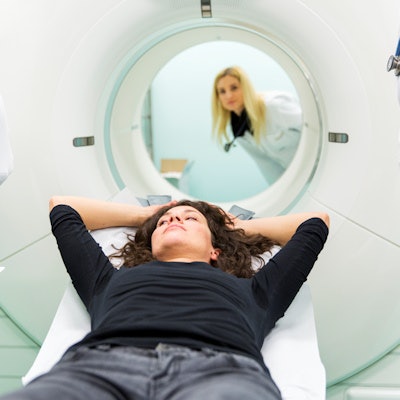
There is plenty of room for improvement when it comes to clinicians following established reporting guidelines for oncology PET/CT scans. A survey of more than 200 imaging sites worldwide found a "lack of awareness" that reporting standards even exist, according to results published online November 2 in the Journal of Nuclear Medicine.
The poll revealed that approximately 20% of respondents did not generate a joint molecular and anatomical imaging report from PET/CT oncology scans, and, somewhat surprisingly, approximately 10% of the respondents admitted there was no joint statement or conclusion in their reports.
"Broad variation in the PET/CT reporting strategies adopted for oncology studies and widespread lack of awareness of existing guidelines for PET/CT reporting are evident from responses to this survey, raising concerns as to whether reporting clinicians are optimally utilizing the complementary information from each modality," wrote lead author Dr. Lutz Freudenberg from ZRN Rheinland in Germany and colleagues. "Greater efforts are needed to ensure harmonization of reporting practices."
The importance of accuracy and explicit details in any diagnostic imaging report is not debatable. However, previous studies have shown that clinicians often use their own reporting style, which can lead to errors, vague and incomplete details, and delayed results.
"Moreover, past studies as well as our own experience show that PET/CT reports, in particular, can vary widely in quality and format, thus potentially leading to misinterpretation and, ultimately, to incorrect patient management," the authors noted.
To get a better handle on current practices of PET/CT report generation, the researchers created a web-based survey that was available for six months earlier this year. The poll included questions about the respondents' location, age, gender, and nature of their PET/CT operations, as well as the structure of their reports, the content, and how results are distributed.
A total of 242 responses were returned, with the bulk of the surveys coming from Europe (78%), followed by Asia (11%), Africa (5%), the Americas (5%), and Oceania (1%). The imaging centers averaged 1,490 (± 50) PET/CT scans annually. There were 99 radiologists (41%) among the respondents, along with 51 (21%) nuclear medicine specialists, 52 (22%) dual-board-certified clinicians, and 22 (9%) residents in nuclear medicine or radiology.
Key findings included the following:
- 44 respondents (18%) did not generate a joint report from both PET and CT images; 15 of those sites created separate PET and CT reports.
- 55% of the centers follow 2015 guidelines from the Society of Nuclear Medicine and Molecular Imaging (SNMMI) and the European Association of Nuclear Medicine (EANM), but 30% of those polled were unaware of the guidelines.
- One-third of the reports included information on a patient's tumor, node, and metastases (TNM) stage, while 34% of the reports included this information occasionally and 12% included it only for selected tumors.
Given that PET/CT has been part of the clinical imaging setting for almost two decades, a "minimum set of reporting standards should be accepted by now in order to support state-of-the-art patient management," the researchers wrote. "By adhering to a high-quality reporting strategy, expectations of our referring clinical partners can be met more easily."




















